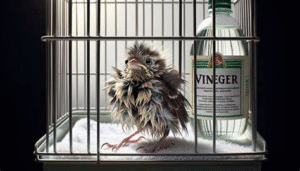Hearing your dog breathing heavily or rapidly in their sleep can be unsettling for any pet owner. While it’s natural to feel concerned, it’s important to know that in many instances, this behavior is completely normal and no cause for alarm. Just like humans, dogs experience different stages of sleep, and some of these can lead to temporary changes in their breathing patterns.
Often, heavy breathing is simply a sign that your dog has entered the Rapid Eye Movement (REM) stage of sleep. This is the deep sleep cycle where dreaming occurs. During this phase, you might also notice your dog twitching its legs, wagging its tail, or making soft whimpering or barking noises. However, heavy breathing can occasionally signal an underlying health issue. The key is learning to distinguish between normal sleep behavior and signs of genuine respiratory distress.
A healthy dog’s normal resting respiratory rate is generally under 30 breaths per minute. VCA Animal Hospitals notes that this rate should be measured when the dog is calm and resting—not immediately after play or during sleep, when dreaming can temporarily increase it. This guide will help you understand the harmless reasons for heavy breathing during sleep, identify the red flags that point to a potential medical problem, and know when it’s time to seek professional veterinary care.
💤 Normal Reasons for Heavy Breathing During Sleep
Before assuming the worst, it’s helpful to understand the common, benign reasons why your dog’s breathing might seem heavy or fast while they’re asleep. These are typically temporary and resolve on their own.
- Dreaming (REM Sleep): This is the most frequent cause of rapid breathing in sleeping dogs. The REM sleep stage is an active period for the brain. According to the American Kennel Club, the irregular breathing, twitching, and vocalizations you observe are external signs that your dog is likely chasing squirrels in their dreams. This type of breathing is intermittent and usually stops when they transition to a different sleep stage.
- Temperature Regulation: Dogs don’t sweat through their skin like humans do to cool off. Their primary method of regulating body temperature is panting. If your dog’s sleeping environment is too warm, or if they are nestled in heavy blankets, they may pant or breathe heavily in their sleep to release excess body heat. This is a normal physiological response.
- Recent Exertion: If your dog had a vigorous play session, a long walk, or got very excited shortly before falling asleep, their respiratory and heart rates may take a while to return to a normal resting state. This elevated breathing can continue into the initial stages of their nap.
- Breed Predisposition: Certain breeds, particularly brachycephalic (flat-faced) dogs like Pugs, Bulldogs, and Boston Terriers, are anatomically prone to heavier, often noisy breathing. Their shortened airways can make breathing more laborious, even at rest. For these breeds, some level of heavy breathing or snoring can be their “normal,” but it’s still crucial to know their baseline so you can spot any concerning changes.
When to Be Concerned: Red Flags to Watch For
While occasional heavy breathing is normal, persistent or sudden changes can be a sign of distress. Pay close attention to these red flags, as they indicate it’s time to consult your veterinarian.
- Consistently High Respiratory Rate: The most objective measure is your dog’s resting respiratory rate. A rate that is consistently over 35-40 breaths per minute when your dog is truly resting (not dreaming) is a significant concern. The PetMD veterinary guide emphasizes that a sustained high rate, known as tachypnea, warrants a veterinary evaluation.
- Labored Breathing (Dyspnea): This is different from just breathing fast. Look for signs that your dog is working hard to breathe. This may include flared nostrils, breathing with an open mouth when not hot, or exaggerated stomach and chest movements with each breath. It may look like their whole body is heaving.
- Unusual Noises: While snoring can be normal for some dogs, a sudden onset of loud snoring or any new, strange sounds are cause for concern. Listen for wheezing (a high-pitched whistling sound), crackling, or rattling noises, which could indicate fluid or inflammation in the lungs or airways.
- Changes in Gum and Tongue Color: A healthy dog’s gums and tongue should be pink. If you notice they look pale, blue (cyanotic), or grayish, it signifies a lack of oxygen. This is a medical emergency requiring immediate veterinary attention.
- Accompanying Symptoms: Heavy breathing is rarely an isolated symptom when a serious medical issue is present. If it’s paired with other signs like persistent coughing, lethargy, weakness, loss of appetite, or distress when lying down, it strongly suggests an underlying problem.
Potential Medical Causes of Abnormal Breathing
If you’ve observed the red flags above, the heavy breathing could be a symptom of a serious medical condition. It’s vital to get a professional diagnosis, as many of these issues require prompt treatment. According to the Merck Veterinary Manual, difficulty breathing is often related to disorders of the lungs and airways or the heart.
- Heart Disease: Conditions like congestive heart failure can cause fluid to build up in and around the lungs (pulmonary edema), making it difficult for your dog to get enough oxygen. This often leads to rapid, shallow breathing and coughing, especially when lying down.
- Respiratory Conditions: A wide range of issues affecting the lungs and airways can be the culprit. These include pneumonia (an infection in the lungs), bronchitis, tracheal collapse (common in small breeds), or laryngeal paralysis, where the vocal cords obstruct the airway.
- Heatstroke: Although often associated with activity, a dog in a hot room can suffer from heatstroke even while resting. Frantic panting, drooling, disorientation, and a high body temperature are classic signs of this life-threatening emergency.
- Anemia: This is a condition where the body lacks enough healthy red blood cells to carry adequate oxygen to the tissues. To compensate, the dog will breathe faster to try and increase oxygen intake.
- Pain or Stress: Pain from an injury, arthritis, or other conditions can cause a dog’s respiratory rate to increase. Likewise, anxiety and stress can lead to panting and heavy breathing.
- Obstruction: A foreign object lodged in the throat or airway can cause sudden and severe breathing difficulty. This is an acute emergency.
What to Do: A Guide for Pet Owners
Seeing your dog in respiratory distress is frightening, but staying calm and taking methodical steps can make a significant difference. Here’s what you should do.
- Assess the Situation Calmly: First, determine if your dog is dreaming or truly struggling. If they are twitching and their eyes are moving, it’s likely REM sleep. Wait a few moments to see if the breathing pattern returns to normal.
- Count Their Resting Respiratory Rate: If you are concerned, count their breaths for a full 60 seconds while they are calm or lightly asleep. As advised by VCA Animal Hospitals, one breath counts as one inhalation and one exhalation. A consistent rate above 35-40 breaths per minute is a signal to call your vet.
- Check for Other Red Flags: Look for the warning signs listed above. Check their gum color. Note any unusual noises or labored movements. Is your dog lethargic or showing any other signs of illness?
- Record a Video: A short video of your dog’s breathing pattern can be incredibly helpful for your veterinarian. It allows them to see exactly what you are describing and can aid in a more rapid and accurate assessment.
- Contact Your Veterinarian:
- Call immediately for an emergency appointment if you see: Labored breathing (dyspnea), blue or pale gums, constant heavy breathing with a rate over 40, or signs of extreme pain or distress.
- Schedule a regular appointment if you see: A new but mild increase in breathing rate, occasional coughing, or other less severe symptoms. It’s always better to be safe and get it checked out.
Ultimately, you know your dog best. Any significant deviation from their normal behavior, especially concerning something as vital as breathing, warrants a conversation with a veterinary professional. Timely intervention can lead to better outcomes and give you peace of mind.











